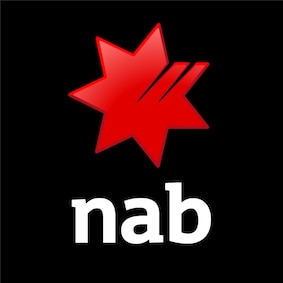How to budget your money | Create a savings plan - NAB
What is budgeting?
A budget is a plan that shows you how much money you’re earning, spending and saving. Understanding where your money goes each week or month allows you to identify ways to cut costs and save more.
How to make a budget
Budgeting begins with having realistic goals and understanding your monthly income. Once you have a clear picture of your finances, you can categorise your expenses.
Here’s how to get started:
1. Calculate your monthly income
For most of us, this is a matter of checking our payslip and seeing what we get paid after tax and super.
It’s trickier if you’re a contractor or self-employed, or if your income varies from month to month. Use your last tax return and work out your weekly net income (after business expenses, GST and PAYG).
Do you have any other sources of income - interest from investments, government contributions or child support payments? Work out what they average week to week, then add this in too.
2. List all your expenses
It can be easy to underestimate how much you spend on a day-to-day basis. Grouping your expenses into categories can make it easier to visualise where your money goes. Here’s one way you can organise your spending into the following categories:
- Housing costs: Home loan repayments or rent, home repairs, insurance, rates, mobile and internet plans, and utilities like gas, electricity, and water.
- Food and drink: Groceries, takeaway, eating out, coffees and snacks.
- Personal grooming: Clothes, shoes, accessories, and grooming products.
- Transport costs: Petrol, parking, public transport, and tolls.
- Insurance: Premiums for insurances, including health, life, car, and travel.
- Health and wellbeing: Doctor and dentist appointments, new glasses, or medications.
- Leisure and entertainment: Streaming subscriptions, weekends away, movies and gifts for special occasions.
- Debt: Repayments for personal loans, credit cards, store cards and other loans.
- Unplanned expenses: This could include a new fridge or major car repairs. Learn how to build an emergency fund to cover these bigger, unexpected costs.
You can use our budget planning calculator to help you work out your budget.
3. Split expenses into needs and wants
Once you’ve worked out what your expenses are, separate them into ‘needs’ and ‘wants’. Your ‘needs’ can be expenses like rent and groceries. The ‘wants’ can be the non-essentials like leisure and entertainment. This is a great exercise to help you determine and prioritise where your money ought to go and what you can cut back on to save more.
4. Find ways to cut costs
Finding ways to pay less for expenses will take a bit of time and research, but the savings could be worth the extra effort. Here’s some ways you can cut costs:
- Compare your service providers: Get quotes and compare your gas, electricity, water, mobile and internet providers with other service providers as this might be a good way to cut costs on essential services. Keep an eye on promotional offers that might help you save even more.
- Frequency of insurance premiums: Your health, life, car, and travel insurance may be paid yearly or monthly. It’s a great idea to compare multiple quotes to ensure you get the best coverage for the best price. Paying your insurance premiums yearly instead of monthly might also work out cheaper.
- Be mindful of your debt: Make sure to include repayments for personal loans, credit cards, store cards and other loans, and the interest that comes with them into your budget. Learn more about how to pay off your debt.
5. Set saving goals
What are you saving for? Maybe it’s a short-term goal, like a holiday. Or perhaps you’re saving for something significant, like your first home. Regardless of how big or small, having a goal in mind will make it easier to stick to your budget.
An easy way to set and track your savings goal is by using My Goals in the NAB app. With My Goals you can add your savings goal to your NAB savings account and track your progress towards meeting it.
Explore our savings accounts today.
6. Track and review your budget regularly
To stay on top of your finances you’ll need to review your budget regularly and check in to see if you’re sticking to it.
Another tool that you can use is the Budgets tool in the NAB app. You can create a budget for a variety of different expenses, including essential household bills.
Setting goals and tracking your expenses is a great way to understand where your money is going so you can save more. You can get started today by opening a NAB Classic Banking account.
Budgeting breakdown
Once you have an idea of what you spend and have worked out your income, you can use saving calculation methods to split your budget more effectively. One way to do this would be to use the 50:30:20 rule. Here’s an example of how this formula works:
-
Budget 50% of your income towards living expenses like rent, bills and groceries.
-
Budget 30% of your income towards lifestyle costs like eating out, new clothes or concert tickets.
-
Save the remaining 20% of your income.
This breakdown won’t work for everyone, and you have the freedom to change the percentages to make it work for you. Learn how to use the bucketing method of budgeting to save money.
If you’re spending more than you earn, focus on paying down any debts and cutting costs, or look for ways to increase your income. Reach out to us if you need financial assistance.
Learn more about budgeting
Why you need an emergency fund
Learn what an emergency fund is for and how to start your own.
Tips and tricks for cutting costs
Find different ways to cut back on your spending and save more.
Youth banking
Start your banking education early. Learn how to open an account as a child, teenager or young adult.
Related products and services
NAB iSaver
Enjoy flexibility with your savings while still earning interest. Receive the fixed bonus margin for the first four months on your first new account for balances up to $20m.
NAB Reward Saver
Grow your savings faster with a higher interest rate, if you're a motivated saver.
Transaction accounts
Access your money with our everyday bank accounts with no monthly account fee.
Get in touch
Customer Support Tool
Solve problems quickly online with our easy-to-follow guides. Simply select a topic and we’ll direct you to the information you need.
Contact us
Explore our personal banking contact information and get support with a wide range of products, services and topics.
Visit a NAB branch
Visit us in person at your nearest NAB branch or business banking centre.
Terms and Conditions
Apologies but the Important Information section you are trying to view is not displaying properly at the moment. Please refresh the page or try again later.
The information contained in this article is intended to be of a general nature only. It has been prepared without taking into account any person’s objectives, financial situation or needs. Before acting on this information, NAB recommends that you consider whether it is appropriate for your circumstances. NAB recommends that you seek independent legal, financial and taxation advice before acting on any information in this article.
Target Market Determinations for these products are available at nab.com.au/TMD.





